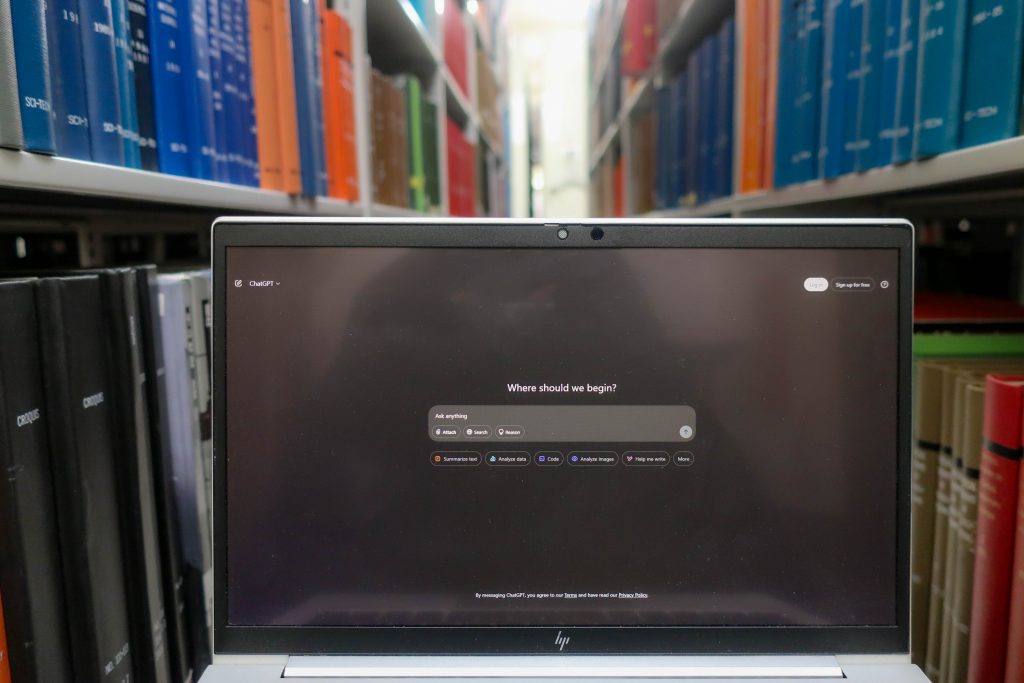
Today, students and teachers alike are facing a dilemma regarding the ethical use of artificial intelligence in classrooms across all educational levels. With unchecked access to AI, many students see it as a tool to save precious time — time that would otherwise have been wasted doing the more laborious parts of, for example, writing a paper. Outlining, researching, editing and even writing a paper are all tedious tasks that many students often find themselves overburdened with, thinking: when am I ever going to use this?
For a period of time it felt as though AI was developing faster than we could figure out how to regulate its use, but as more institutions start to develop special AI policies and regulations, the response to it, though unique to each instructor, has the potential to hold up within the walls of a classroom. Across all grade levels, classroom activities can allow for as much or as little opportunity for the use of AI as the instructor prefers, but only well within what they can actually control.
What may perhaps be more concerning is what happens outside of the classroom, in the ways students find themselves dealing with those aforementioned time and labor intensive assignments. It is not at all difficult to see the appeal of using AI to help out with an assignment, as much or as little as the student ethically deems fit. Sometimes, it feels as though the worst assignments are due at the busiest of times – an essay on the Odyssey, pages of math homework, practice right after school – would the easy way out not just be… easier?
Maybe, but tucked within drafting, writing and searching for evidence to produce a five-paragraph essay on Odysseus’ fate versus his free will is a learned ability to utilize context to defend one’s reasoning. Somewhere in a geometry assignment where one must show each and every step to prove that a triangle is truly a triangle is a lesson on communicating a concept with clarity. These are skills that were not taught directly but were rather inherited by muscling through seemingly irrelevant tasks. Struggle and recovery is how these skills are built, and it would be a disservice to young students to allow them to avoid building them.
Effective AI policy or not, educators truly have no control over what students do on their own time, and AI detection software is often inaccurate and unreliable. So, how can they encourage students to always be producing authentic work, outside of the confines of what they can actually control?
Perhaps the answer is to lean away from demonizing the use of AI and instead work on taking the power away from it. Empowering the original work of students and encouraging them to find their passion within the work they are doing can help to prevent cheating by instilling a love for learning and taking pride in one’s own work. Giving students ample time for large, time-intensive assignments and time to work in class will teach them time management skills they need while also ensuring that they will only be put in that compromising time crunch if they procrastinate. And, of course, the best way to take power away from AI is to show students fair ways that they can use it. Like it or not, it is undeniably a part of our lives and the world. Many educators have already moved towards integrating AI into assignments and allowing students to use it to explore and organize their ideas. Lastly, if it has gotten to a point where students feel a need to get assistance from AI on assignments, perhaps the more glaring issue to revisit is why they are not truly absorbing the content from the lesson.
Educators are, and always have been, on the frontlines of preparing new generations to adapt to new discoveries, scientific innovation and societal issues. While it can be a lot to demand, schools need passionate teachers who can introduce new technology into the classroom without compromising students’ learning – just as they have always done.


